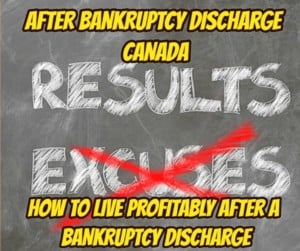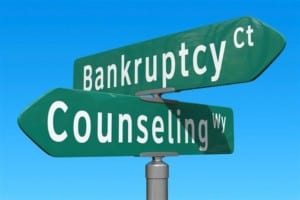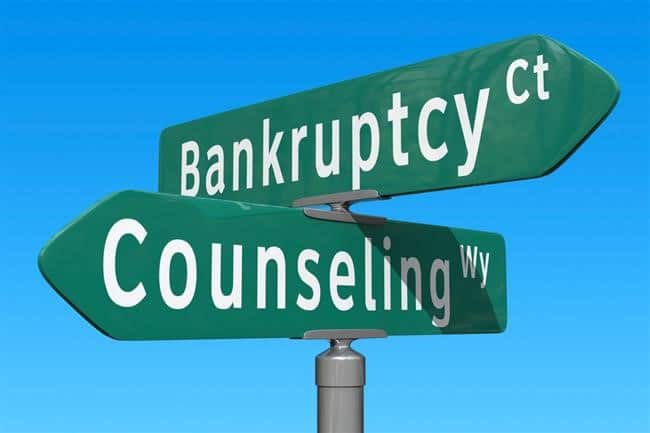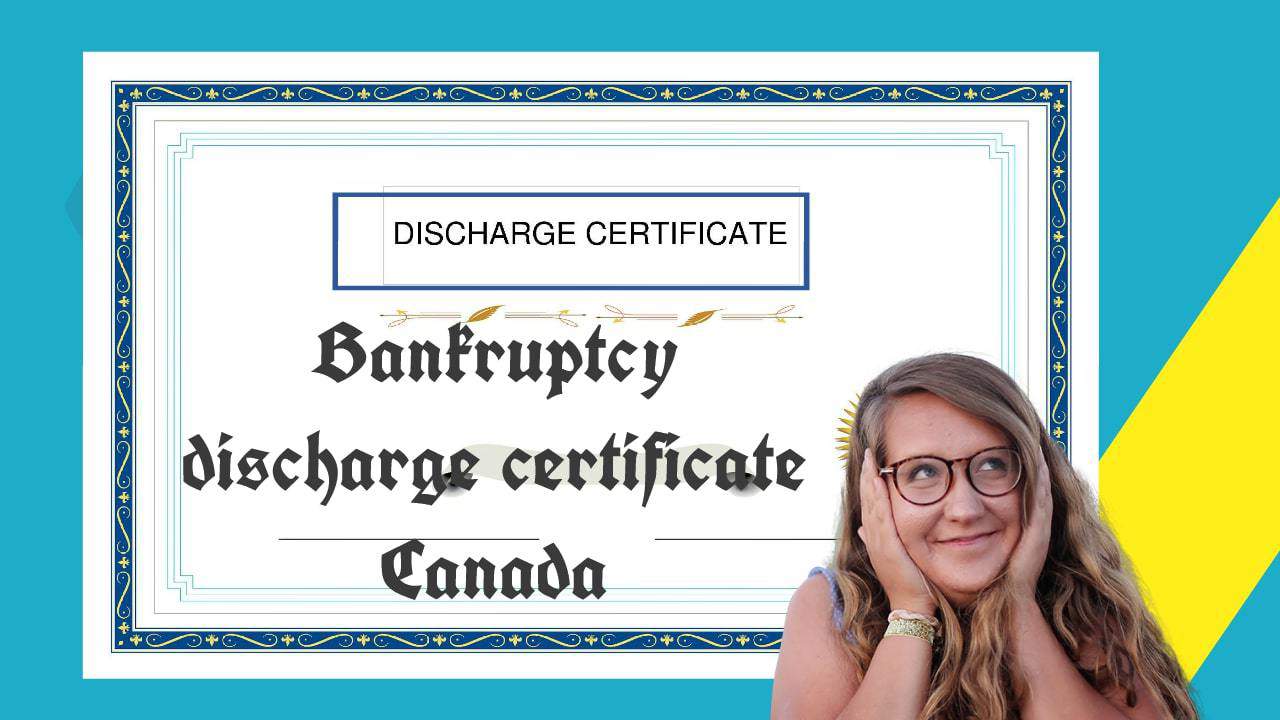
If you would like to listen to the audio version of this Brandon’s Blog, please scroll to the bottom and click on the podcast
The Ira Smith Trustee Team is absolutely operational and Ira, in addition to Brandon Smith, is readily available for a telephone consultation or video meeting. We hope that you and your family are safe and healthy.
Bankruptcy discharge certificate Canada introduction
What is a bankruptcy discharge? When a bankrupt is discharged from bankruptcy, he/she gets a bankruptcy discharge certificate Canada. The individual is launched from the legal responsibility to repay financial debts that existed on the day that the bankruptcy was filed. This is true other than for certain financial debts that are not discharged when the insolvent receives his/her discharge which I will go over listed below.
Usually, only personal bankrupts are discharged from bankruptcy. Companies that are bankrupt remain that way. The only method a company can exit from bankruptcy is if the claims of creditors are paid off with interest. This never occurs. If it could, the company would have submitted a restructuring strategy under either the Bankruptcy and Insolvency Act (Canada) (BIA) or the Companies’ Creditors Arrangement Act (Canada) (CCAA).
Therefore, the balance of this Brandon’s blog will talk about an individual person who receives a bankruptcy discharge certificate Canada.
Who can issue a bankruptcy discharge certificate Canada?
Only a Canadian licensed insolvency trustee (Trustee) can carry out the bankruptcy administration and then provide the bankruptcy discharge certificate Canada. If neither the Trustee nor a creditor opposed the discharge and the Trustee issued the certificate, that means the bankrupt individual satisfied all of their obligations without the need for a court hearing.
If either the Trustee or a creditor opposes the discharge of the bankrupt individual, by issuing a notice of opposition to discharge, that indicates:
- In the case of a Trustee opposition, that means the bankrupt did not fulfill all of their duties as an undischarged bankrupt when the time came for the Trustee to make that determination if the bankrupt is entitled to a discharge.
- One or more creditors believe there is information that needs to be evaluated by the court to determine what kind of discharge from bankruptcy the person should get if any.
The court would then determine what type of bankruptcy discharge the bankrupt should receive:
- absolute – entitled to an immediate discharge;
- conditional – can obtain a discharge after fulfilling one or more conditions;
- suspended – the bankrupt’s discharge will occur at a later date and is combined with either an absolute bankruptcy discharge or conditional bankruptcy discharge;
- refused – the bankrupt’s discharge is such that the court refuses to hear the application; or
- “no order” – the Trustee advises the court that notwithstanding the time period has elapsed, the bankrupt has not properly fulfilled all of his or her duties and the bankrupt has failed to respond to the Trustee’s requests. In this case, once the “no order” order is issued, the Trustee is at liberty to seek its discharge (more on this below).
Once the bankrupt person has fulfilled the conditions set by the court and/or the suspension period has ended, the Trustee can then issue the bankruptcy discharge certificate Canada.
Bankruptcy discharge certificate Canada: How long will I be bankrupt?
For a 1st time bankrupt person, many will certainly qualify for an automatic discharge after 9 months.
If you have been bankrupt before a second bankruptcy discharge will not be able to get a discharge in 9 months. Your bankruptcy will be prolonged. A 2nd bankruptcy lasts for a minimum of 24 months. If you have surplus income, a second-time bankrupt will not have the ability to get a bankruptcy discharge certificate Canada for 36 months.
For a 3rd time bankrupt, the timeline is the same as the 2nd time bankrupt. Nonetheless, it is more probable that there will be resistance to that bankrupt’s discharge by the Trustee or one or more creditors. The court can prolong the time in whichever means it believes is most suitable.
Bankruptcy discharge certificate Canada: Who tells my creditors that I am discharged from bankruptcy
The Trustee will notify the Office of the Superintendent of Bankruptcy (OSB) that the individual has been released from bankruptcy. The Trustee advises the OSB by filing a copy of the bankruptcy discharge certificate Canada. The Trustee advised the creditors that the insolvent is qualified to a discharge unless an opposition is filed in the bankruptcy notification sent out to all creditors.
The Canadian credit bureaus, Equifax Canada and TransUnion Canada are notified because they pay the OSB to get Canadian bankruptcy information. The credit bureaus then update all credit files with the corresponding bankruptcy info, including discharges.
Bankruptcy discharge certificate Canada: What debts are not forgiven and will survive my bankruptcy?
What debts cannot be discharged? A bankruptcy discharge certificate Canada provides the discharge of all unsecured debts, except for:
- matrimonial or children support payments;
- fines or penalties mandated by the court;
- claims arising from fraud or fraudulent breach of trust;
- student loan debt if less than 7 years have actually passed since the bankrupt stopped being a part-time or full-time student.
These kinds of debts survive bankruptcy and are not released. The person will need to continue paying those financial obligations according to their terms. All other debts are discharged and do not have to be paid.
Also, any debts that are properly secured by one of your assets, such as a house mortgage or car financing, are not released as a result of your bankruptcy or your bankruptcy discharge certificate Canada.
Bankruptcy discharge certificate Canada: What if my creditors still contact me and try to get me to pay them?
If the creditors are consistently calling you and demanding settlement, supply them with a duplicate of your bankruptcy discharge certificate Canada. If the creditor states they were not aware of your bankruptcy, also offer them a duplicate of your sworn statement of affairs revealing them listed as a creditor.
If they are listed, then the Trustee sent them a notice of bankruptcy including a form 31 proof of claim to complete and return to the Trustee.
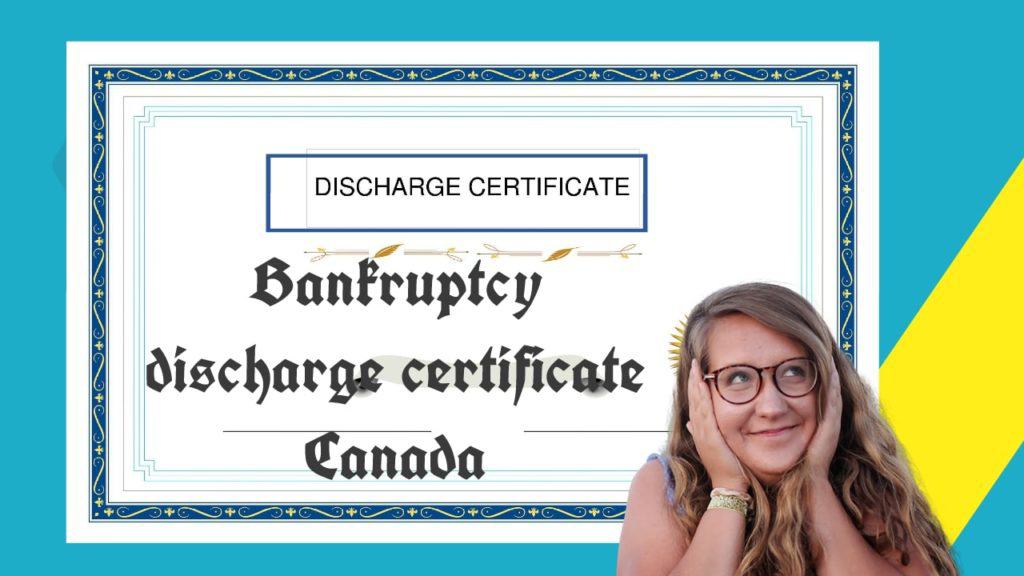
Bankruptcy discharge certificate Canada: What does trustee discharge mean?
After the Trustee has fully completed the administration of the bankruptcy estate, the Trustee is entitled to its discharge. The Trustee must prove to the OSB that it has completed the administration. This includes providing the OSB with a copy of the Final Statement of Receipts and Disbursements to get the Superintendent’s comment letter.
Then the Trustee must provide the final statement, the comment letter, and other documents to the court to prove that the administration is complete, get the final statement approved, and taxed. When that happens, the court issues the Trustee’s discharge order. The Trustee then files that order with the OSB and closes its file.
It is possible for the Trustee to receive its discharge while the bankrupt remains undischarged. This happens either when the result of the bankrupt’s discharge hearing results in a “no order” (see definition above) or sufficient time has elapsed showing the bankrupt is not going to fulfill the conditions to get a discharge. In this case, the Trustee is at liberty to get its discharge.
Once the Trustee gets its discharge, an undischarged bankrupt loses the protection of the automatic stay of proceedings that were invoked upon the bankruptcy occurring. Once this protection is lost, the creditors are at liberty to once again pursue the bankrupt person for collection on the debts owing.
Bankruptcy discharge certificate Canada: what if I fail to include one of my creditors in my bankruptcy?
If I failed to remember to include one of my creditors in my bankruptcy do I need to pay them? If your Trustee hasn’t been discharged yet, simply tell the creditor to call your Trustee to participate in your bankruptcy.
If your Trustee has actually been discharged then the creditor is qualified to be paid the same returns (% of the debt) your other creditors obtained from your bankruptcy. You will need to pay this amount.
If you intentionally omitted the lender from your bankruptcy (the obligation is on the lender to verify this) after that the lender can ask the court to enable their financial obligation to survive, and if successful, you will need to pay the full amount.
Bankruptcy discharge certificate Canada: What are the benefits of keeping my bankruptcy discharge papers?
As reviewed above, after you have actually successfully finished every one of your bankruptcy responsibilities and any kind of conditions of discharge, you will receive your discharge from bankruptcy. When you get your bankruptcy discharge your Trustee will give you a bankruptcy discharge certificate Canada.
That paper is proof that you have actually formally been launched from your financial debts that were included in your bankruptcy. As already stated, particular financial obligations can’t be discharged in bankruptcy. Also, any type of debts that you sustain after the day of your bankruptcy are your responsibility as well as are not eliminated by your bankruptcy discharge.
Bankruptcy discharge certificate Canada: How long does my credit score take to recover from bankruptcy?
Your bankruptcy will stay on your credit report for 6 years from the date your bankruptcy discharge certificate Canada is issued. If you have actually been bankrupt more than once, then it might be reported for approximately 14 years from the date of your discharge.
Having actually removed your financial obligation problems by getting your bankruptcy discharge certificate Canada, most individuals see they now have the ability to construct a more powerful financial future. Unless you urgently need to purchase a house for the very first time or buy an auto, you need not also bother with getting approved credit to take on debt right away. Many find they have the ability to live without credit considering that they have a more powerful cash flow than prior to bankruptcy. They are now able to start saving.
While you remain in bankruptcy, you are learning to live your life without credit. You are living essentially on a cash basis. You are not spending more than you make. Your Trustee is advising you to do so on an after-tax basis so that you will not have a nasty surprise when tax time comes.
Bankruptcy discharge certificate Canada: 2 simple steps to improve your credit score after your discharge from bankruptcy
This remains for the first 2 or three years after you have actually completed the bankruptcy process. Throughout this time access to credit will be restricted.
We encourage all our bankrupts, once discharged, to immediately start rebuilding their credit. You can slowly start rebuilding your credit through 2 simple steps:
- Apply for a secured credit card. This kind of credit card works on the basis that you deposit money against the card with the secured credit card issuer. You then use the credit card like any other. If you pay it off each month, this gets reported to the credit bureaus. This proper use of this credit helps to improve your credit score. If you do not pay the card off when due, the issuer takes the money from your deposit to pay it off.
- Take out a small RRSP or TFSA loan. The funds are deposited into your RRSP or TFSA. Make monthly payments against the loan so that the principal and interest are all fully repaid within 1 year. Start small. The important thing is that you do what your cash flow allows. The fact that you are current on your loan is reported monthly to the credit bureaus. This helps to improve your credit score.
Keep in mind that if you do not stay current in paying off your secured credit card balance or your loan, this will further hurt your credit score. The idea is that you have saved this money each month so that you are able to make the monthly payment.
Bankruptcy discharge certificate Canada summary
To declare personal bankruptcy is a major life event. However, it is a necessary thing to rid yourself of crippling debt. Most people who declare bankruptcy have been faced with a major life event. The main examples are illness, pay cuts, job loss, or divorce. It is not your fault. I hope this bankruptcy discharge certificate Canada Brandon’s Blog has given you helpful information.
Do you have too much debt? Are you in need of financial restructuring? The financial restructuring process is complex. The Ira Smith Team understands how to do a complex restructuring. However, more importantly, we understand the needs of the entrepreneur or the person who has too much personal debt.
You are worried because you are facing significant financial challenges.
It is not your fault that you are in this situation. You have been only shown the old ways that do not work anymore. The Ira Smith Team uses new modern ways to get you out of your debt troubles while avoiding bankruptcy. We can get you debt relief freedom.
The stress placed upon you is huge. We understand your pain points. We look at your entire situation and devise a strategy that is as unique as you and your problems; financial and emotional. The way we take the load off of your shoulders and devise a debt settlement plan, we know that we can help you.
We know that people facing financial problems need realistic lifeline. There is no “one solution fits all” approach with the Ira Smith Team. That is why we can develop a restructuring process as unique as the financial problems and pain you are facing. If any of this sounds familiar to you and you are serious in finding a solution, contact the Ira Smith Trustee & Receiver Inc. team today.
Call us now for a free consultation.
We will get you or your company back on the road to healthy stress-free operations and recover from the pain points in your life, Starting Over, Starting Now.
The Ira Smith Trustee Team is absolutely operational and Ira, in addition to Brandon Smith, is readily available for a telephone consultation or video meeting. We hope that you and your family are safe and healthy.



